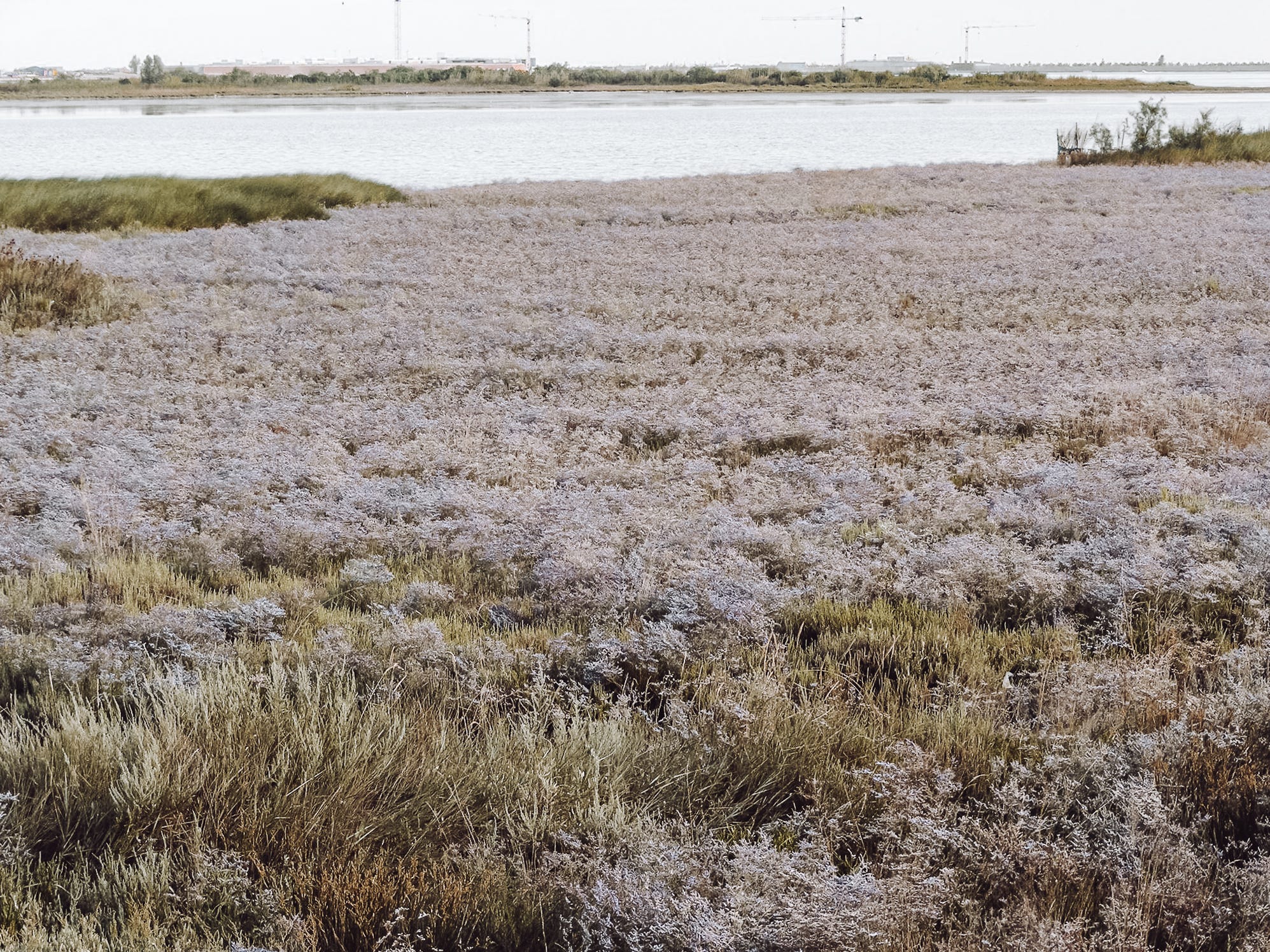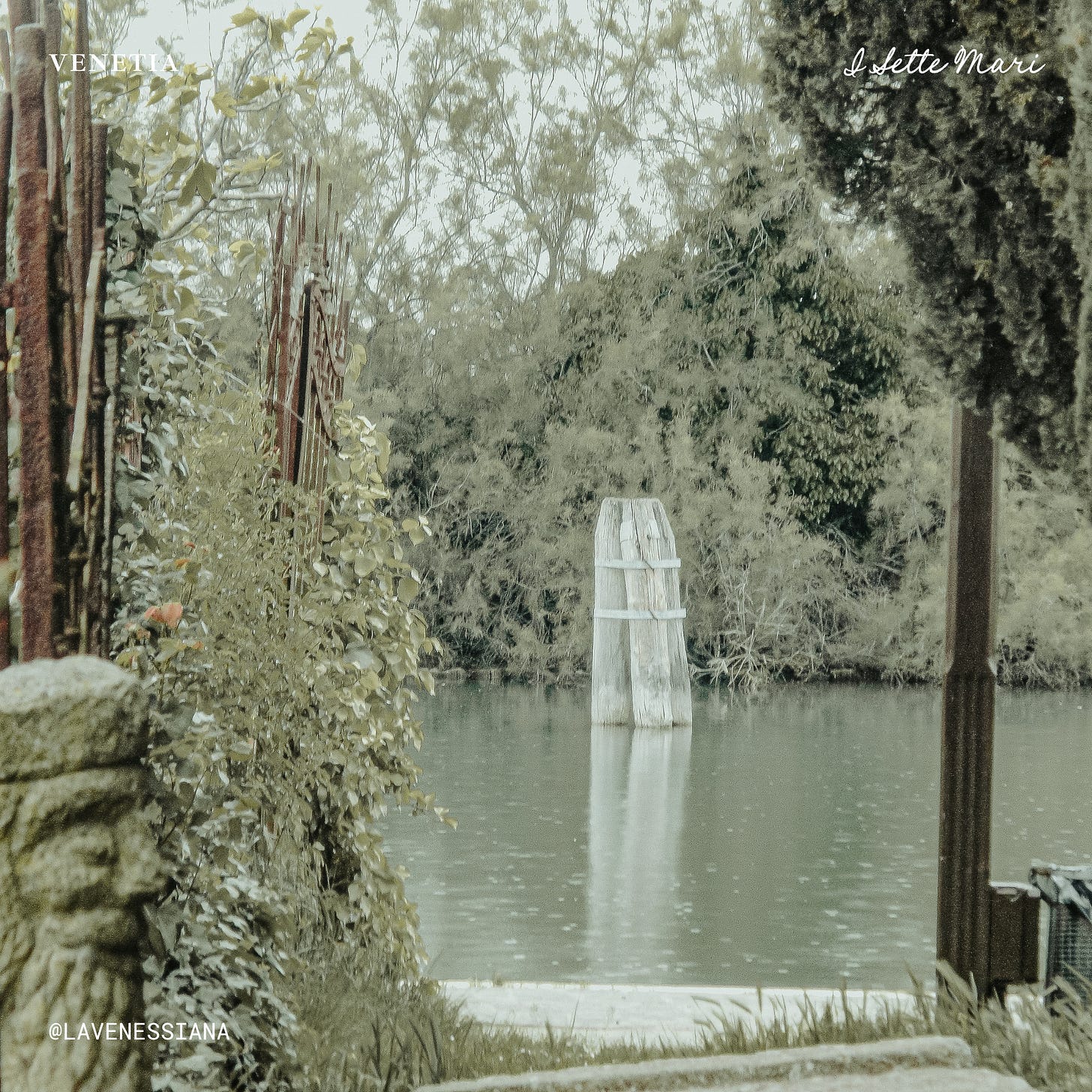The Gardens of the Seven Seas
Talking about the origins of Venetian gardens, and the ancient Lagoonscape called Septem Maria - Seven Seas
Had you come to the Lagoon of Venice 2000 years ago, your first impression would have been one of purple sea lavender carpets, spreading everywhere in that shallow stretch of water.
And the notion of Seven Seas would have been familiar to you: Just south of Chioggia was the entrance to the so-called Seven Seas, green lagoons interspersed with marshy swamps and lidi sottili (narrow islands), stretching from Ravenna to Aquileia, and bordering upon the Roman merchant hub called Altinum.
Back then, the Romans were living in little villages along the estuary and mainland, and it was them calling the lagoons lining the northern Adriatic sea Septem maria (Sette Mari in Italian, that is Seven Seas). The Adriatic shoreline was further inland than now - in the meantime, the estuary and mouths of the rivers have grown, surrounded by marshes and sand banks.
Salt was extracted from saline (salt marshes), fishermen lived amongs the thick reeds in huts built from canes, reeds and straw. Even the settlers living along the shores ventured into the Lagoon to hunt geese and other water fowl on special flat wooden rafts and boats. So those Seven Seas were a well-known territory to the people living along the rivers and on the shores of the lagoons to find a safe haven when they were threatened by foreign invaders from the 5th century onwards.
Our Lagoon was ONE rich garden for these first soon-to-be-settlers: pine trees were lining the Cavallino and Equilium shores, with wild horses living there (equilium / cavallino means “horse”).
The Roman author Plinius the Elder (23-79 AD) tells us about the ancient lagoonscape, separated from the open sea by sandbanks and “sprinkled” with tiny islets. Lagoons quite different from today’s because they used to be very shallow and thus a challenge to navigate: During those times, the expression “sailing the seven seas” was coined, meaning that special know how was required to cross those marshy lagoons crisscrossed by reeds and natural canals, following water flows surprisingly turbulent especially in spring and autumn.
In fact, those stretches of shallow waters seemed endless, several lagoons connected by natural canals, and covered by mauve colored sea lavender – limonium.
This ancient lagoon actually stretched from Ravenna in the South to Aquileia in the North. The Romans built a road crossing its fringes in northern direction, called Via Popilia, to reach their merchant hub called Altinum (Altino in our times).
From Altino to Aquileia, the Via Aemilia, 62 miles long, skirted the northern lagoons. But parallel to these land routes, lagoon waterways following natural water courses amongs the islands and marshlands had been carved out.
There is also a legend connected to the Seven Seas: Around the year 50 AD, Saint Mark traveling from Aquileia to Rome, when crossing the lagoons he was surprised by a gale and had to find refuge on an island that was to become part of Venice later, and where the monastery of San Francesco della Vigna is located, in the Venetian sestriere of Castello. Here, St. Mark had a dream when an angel told him that he would return to a future city to be built right in that place in the midst of the lagoon and become its patron saint.
Image: The dream of Saint Mark seeking refuge in the lagoon during a gale: Capella Zen, Basilica di San Marco
So well, this is the ancient landscape on which the first settlers of the Lagoon undertook a surprising task: Building settlements and gardens!

A Venetian children’s book describes the ancient lagoonscape in a very poetic but useful way:
“At that time, the lagoons were mostly a group of green marshlands, sandy shores, solitary water mirrors surrounded by reeds and ferns, where currents foamed and tides forged meandering canals, large and narrow, cutting through the marshes. Like a liquid plain, filled with bird cries and breaths of wind”. - From: Scolta che te conto, a book by Alberto Scutari
Why is this relevant for gardeners?
I think this poetic introduction explains quite well what a challenge it must have been to build settlements and gardens in such a liquid and eternally unstable environment.
Originally, each island was surrounded by barene, which is why these marshlands have the function to consolidate soil otherwise exposed to wind and water flows.
Also, there are various types of islands in the Lagoon, and not all are ideal for gardens, let alone permanent settlements, because some islands are too low-lying, too unstable, too easy to erode. For example, one could never build on barene (marshlands overgrown with herbs) and velme (sandbanks).
Also from the beginning it was clear that the Lagoon, almost entirely covered by marshlands, was too shallow to allow larger merchants cogs to pass: By carving out deeper canals, lagoon morphology would be changed, allowing stronger currents in and eroding the barene:
The barene as core feature of the lagoons were critical to keep the ecological balance, that is to keep the lagoons alive.
The first settlers knew all about this, and thus, in the 11th century AD, instead of digging out deep water canals, they moved the ancient port facilities, out of the Lagoon, next to the inlet of San Nicolò (Lido).
Unstable islands, swamps and shallow waters (knee-deep) were the real reason why Roman and Byzantine Greek settlers gradually moved to an archipelago in the center of the Lagoon, called Rivus Altus. This was to become Venice! Its 118 islands were quite stable and canals were wider and deeper.
In short, Venice wasn’t built on “artificial islands” resting on wooden poles.
This city was built on 118 islands surrounded by barene (salt marshes overgrown with herbs and reeds) - just think of “a reedy area” called Cannaregio (canna meaning reeds) in the northern part of the archipelago. The most stable ground to build on was called Dorsoduro, which could be translated as “solid ground”, another expression we recall today as it is the name of a Venetian sestiere (district).
So yes, to build Venice, wooden poles were used to fill in the gaps between these 118 islands. That’s how the surface of our city was extended in an easy way.
But how and when were gardens created in Venice?
The first settlers being hunters and fishermen were soon followed by monasteries. And here’s where the San Zaccaria monastery comes in, to whom this substack garden magazine is dedicated:
San Zaccaria was the first monastery in Venice, founded by bishop Magnus in the 6th century, as legend has it. It was a monastery where the daugthers of noble families were living. It was a rich monastery as well, whose possessions comprised about one third of the southern Lagoon, as we could make out on ancient maps in the monastery. This included fishing grounds off the Lido and the island Poveglia, and orchards stretching all along to the Grand Canal, to the area where the church of San Moisè is located.
Just imagine what an immense effort this must have been to urbanize these islands. Another challenge was experimenting with growing fruit, vegetables and wine in a salty environment!
Continue reading below how the garden was created, step by step.






